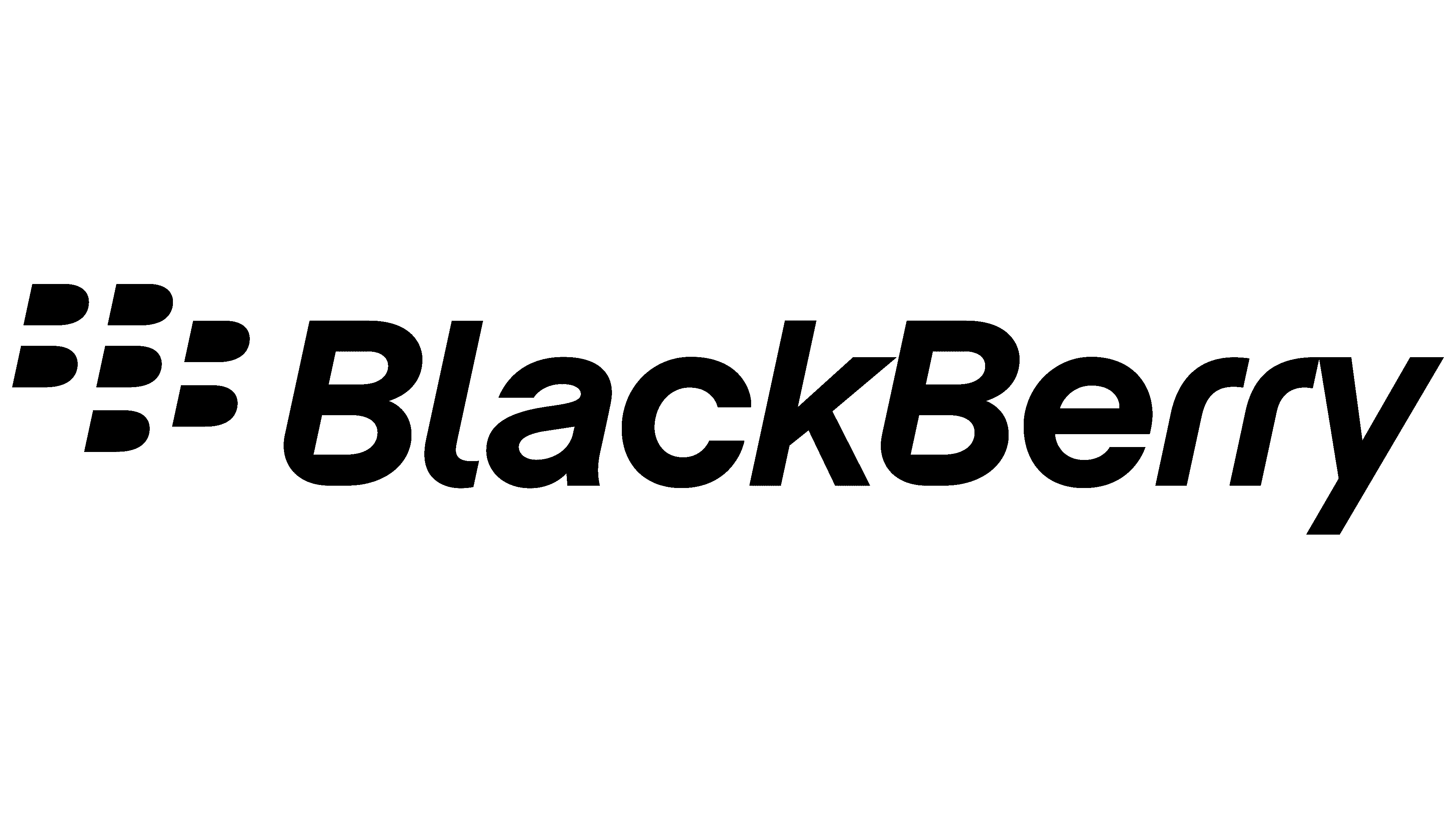BlackBerry Logo
BlackBerry, originally known as Research In Motion (RIM), is a Canadian company famed for pioneering secure smartphones and messaging services. Initially dominating the corporate world with its signature physical QWERTY keyboard phones, BlackBerry shifted its focus over time. Facing competition from iOS and Android, the brand transitioned into providing enterprise software and services, emphasizing security and IoT. While its smartphone reign waned, BlackBerry remains influential in the realm of secure communications and software solutions.
Meaning and history
Founded in 1984 by Mike Lazaridis and Douglas Fregin, BlackBerry, then known as Research In Motion (RIM), started in Waterloo, Canada, focusing on wireless technologies. In 1999, RIM introduced the BlackBerry 850 pager, marking its entry into the mobile communications arena. Its push email service became an instant hit, especially amongst business professionals.
By the mid-2000s, BlackBerry smartphones, with their iconic physical QWERTY keyboards, had become ubiquitous in the corporate world. BlackBerry Messenger (BBM) further elevated its status, making real-time messaging seamless.
However, the landscape began to shift with the advent of Apple’s iPhone in 2007 and the rise of Android OS. These platforms offered a wider range of apps and a touch-first interface, which appealed to a broader audience.
Despite launching BlackBerry 10 OS in 2013, which was a significant overhaul with modern features, they struggled to regain market dominance. By 2015, acknowledging the dominance of Android, BlackBerry released the Priv, its first Android-powered device.
In 2016, a strategic shift was made. BlackBerry opted to end its internal hardware development, licensing its brand to other manufacturers, and pivoted to emphasize software and services. The company’s expertise in security, a hallmark since its inception, allowed it to focus on providing enterprise-level security solutions, embedded software, and services to other businesses.
Today, while the golden age of BlackBerry smartphones may have passed, the company thrives as a leader in secure communications, software development, and IoT solutions.
1996 – 1999
Originally, the emblem showcased the phrase “Inter@ctive” written in an elegant, flowing script, reminiscent of hand-drawn calligraphy. The unique twist was the innovative use of “@” in place of the traditional “a,” underscoring the brand’s digital inclination. The font was predominantly in lowercase, except for the initial capital “I,” with each character spaciously set apart, creating an airy feel. This white, cursive font was set against a contrasting dark canvas, ensuring it popped and grabbed attention. This creative approach not only showcased the brand’s online essence but also demonstrated its commitment to embracing digital innovations and trends.
1999 – 2004
The inaugural logo artfully melds pictorial and textual components. Dominating the top is a gracefully depicted envelope, with an elegant, sinuous line originating from its left edge, which seamlessly extends to outline the envelope. Positioned beneath is the unified brand label, “BlackBerry.” This designation is crafted entirely in uppercase, with a distinct color demarcation: the left segment is tinted in a vivid red while the right adopts a deep black hue. Accompanying each segment is a graphic accent: a gracefully arched line hovers above “Black,” and the aforementioned envelope graces “Berry.” These diverse elements are set against a pristine white backdrop, offering a striking contrast.
2004 – Today
The logo features seven half-oval shapes, mirroring the interspaces within the letter “B” both in dimension and form. The creators employed the distinctive technique of negative space design to craft these elements. Despite the seemingly random arrangement of the graphic components, their dimensions and aesthetic are meticulously outlined in the brand’s guidelines, ensuring a coherent and distinct representation. The precise interplay of spaces and shapes captures the viewer’s attention, highlighting the brand’s commitment to detail and innovative design principles. This ingenious use of negative space showcases the brand’s ability to think outside the box while maintaining consistency.














